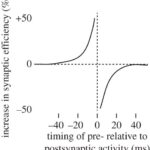Cognitivism Learning Theory is a crucial approach in education that focuses on the internal mental processes of learners. Unlike behaviorism, which emphasizes observable behaviors, cognitivism delves into how the mind processes information. A cornerstone concept within cognitivism is the idea of schemas, cognitive frameworks that organize and interpret information. This article will explore cognitivism learning theory through the lens of schemas, drawing upon the work of pioneering psychologist Jean Piaget to explain this fundamental aspect of learning.
What are Schemas in Cognitivism?
Schemas, in the context of cognitivism, are essentially mental blueprints or frameworks. Piaget described a schema as “a cohesive, repeatable action sequence possessing component actions that are tightly interconnected and governed by a core meaning.” In simpler terms, a schema is your brain’s way of organizing knowledge about the world. It’s a pattern of thought or behavior that helps you to interpret and understand new information and situations.
Consider a simple example: a child learning about animals. Initially, they might develop a schema for “dog” – four legs, furry, barks. When they encounter a new animal, they will try to fit it into their existing schemas. Let’s say they see a cow for the first time.
The “cohesive, repeatable action” is the child’s act of recognition. Recognizing a cow isn’t a one-time event; the child will repeatedly identify similar animals as cows. This recognition process is broken down into components. The child observes various attributes: the cow is alive, has four legs, eats grass, and moos. Each of these observations can be further dissected into simpler concepts. For instance, understanding “alive” or being able to count to “four” are themselves based on pre-existing schemas.
For the child, these combined observations form the “core meaning” of a cow. According to Piaget, this experience creates a lasting cognitive schema, shaping the child’s future understanding of cows in relation to other animals. This basic example illustrates a profound point: Piaget believed that schemas are the bedrock of all human cognitive functions, including:
- Perceiving
- Recognizing
- Conceiving
- Reasoning
Throughout our lives, we continuously develop new, increasingly complex schemas, building upon existing ones. This progression allows us to move from simple recognitions, like identifying a cow, to complex abstract thought, such as pondering, “Do cows recognize me?”
Another practical example is in education. When a student grasps the concepts of addition and subtraction, they are not just memorizing facts. They are developing mathematical schemas. This schema allows them to apply this knowledge to new situations, such as creating a budget to save for a desired item. Cognitivists argue that schemas underpin all such conceptual understandings.
Piaget’s Four-Step Process of Schema Formation
How exactly are these schemas formed and refined? Piaget proposed a four-step process:
- Assimilation
- Disequilibrium
- Accommodation
- Equilibrium
Step 1: Assimilation
Assimilation is the cognitive process of integrating new information into existing schemas. Think of it as fitting new pieces into a puzzle you’ve already started. This new information is interpreted based on what you already know. This prior knowledge can be innate, like the schema for breathing, or learned, like the “dog” schema.
Step 2: Disequilibrium
Disequilibrium occurs when you encounter new information that doesn’t fit neatly into your current schemas. This creates a state of mental discomfort or confusion. Using our animal example, imagine the child who understands “cow” encounters a sheep. They might initially assimilate the sheep into their “cow” schema because it’s a four-legged animal with fur. However, they might notice differences – it “baas” instead of “moos.” This mismatch creates disequilibrium.
Step 3: Accommodation
To resolve the disequilibrium, the child engages in accommodation. This involves adjusting existing schemas or creating new ones to incorporate the new information. In the sheep example, the child will compare their “cow” schema with the characteristics of this new animal. They might seek clarification from a parent or educator, who will identify it as a sheep.
Through accommodation, the child does two crucial things: First, they refine their “cow” schema to exclude sheep. They learn that cows and sheep, while similar, are distinct. Second, they develop a new schema for “sheep,” based on its unique attributes.
Step 4: Equilibrium
Equilibrium is achieved once accommodation is successful. The child now has a stable understanding of both cows and sheep, each with its own distinct schema. When they encounter either animal, their schemas are readily applicable, and they experience cognitive balance.
However, schema development is not a static endpoint. It’s a continuous, cyclical process. Encountering a completely new animal or contradictory information will trigger disequilibrium again, restarting the cycle of assimilation and accommodation. This lifelong process of schema building is central to cognitivism learning theory, highlighting that learning is an active, constructive process of adapting our mental frameworks to the world around us.
In conclusion, understanding schemas and Piaget’s theory provides educators with valuable insights into how learning occurs. By recognizing that students are constantly building and refining their cognitive schemas, educators can tailor their teaching methods to facilitate assimilation, address disequilibrium, and promote effective accommodation, ultimately fostering deeper and more meaningful learning experiences grounded in cognitivism learning theory.
